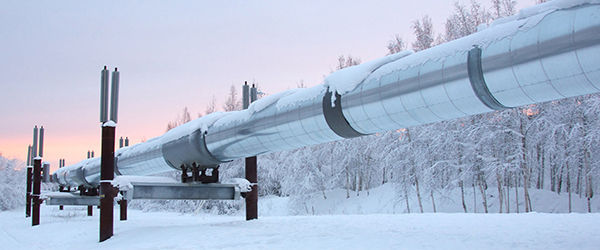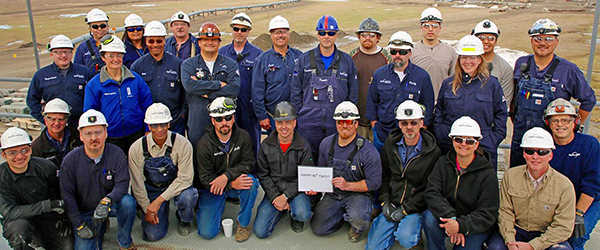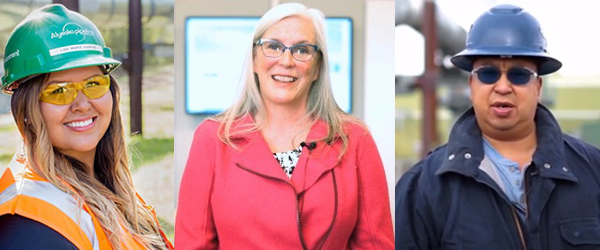You have questions. We have answers! Check out our collection of FAQs below.
Can’t find a question or answer?
Learn more about the pipeline in the TAPS overview section and the TAPS Facts section.
Learn more about 0ur company in the About Alyeska section.
Need to contact us? Click here.
About Employment / Training / Internships
Does Alyeska offer training or internship opportunities?
Yes! Learn more about training and internship opportunities from our Alaska Native Program.
How do I get a job at Alyeska?
To see job opportunities for Alyeska and its contractor partners, please visit our Employment section.
About Alyeska
How many people work at Alyeska? How many are Alaskans?
Alyeska currently has just over 700 employees, while hundreds of contractors work on TAPS at any time. Of Alyeska’s workforce, 94 percent of are Alaskans and about 20 percent are Alaska Native people. And 70 percent of TAPS contractor companies are based in Alaska.
What does Alyeska mean?
Alyeska is an Aleut word meaning mainland.
About TAPS / The pipeline
What is TAPS’ highest point?
TAPS’ highest elevation is when it crosses Atigun Pass in the Brooks Range at 4,739 feet above sea level.
How often are pigs sent through the pipeline?
Scraper pigs, which help clean the pipe, are run every 7-14 days depending on need.
How many rivers and streams does TAPS cross?
TAPS crosses 34 major rivers and streams and nearly 500 others.
How much oil goes through TAPS every day?
The average daily throughput in 2020 was about 480,000 barrels. Learn more about TAPS historic throughput here.
Who owns the land that TAPS runs through?
TAPS crosses land held by a variety of owners, including the federal government, the State of Alaska, and private owners.
Why is some of the pipeline above ground and some buried?
Pipeline design is based primarily on the soil conditions encountered along the right-of-way. Where thaw-unstable permafrost exists, problems associated with melting permafrost were avoided by placing the pipeline above ground on an elevated support system known as Vertical Support Members (VSM). In areas where either unfrozen or thaw-stable permafrost were encountered, the pipeline was buried in the conventional manner. Special burial below-ground sites are found in areas where thaw-unstable permafrost was encountered but where the pipeline had to be buried for highway, animal crossings, or to avoid rockslides and avalanches.
How long is TAPS/the pipeline?
TAPS is 800 miles in length, traveling across Alaska from Prudhoe Bay on the state’s North Slope to Valdez and the ice-free Port Valdez.
About the oil
How many tankers visit the Valdez Marine Terminal every year to transport oil?
Alyeska loaded 209 tankers in 2020, for an average of 17 per month.
What temperature is the oil when it is put into TAPS?
The oil is between 85 degrees (October-April) and 95 degrees (May-December) when it enters TAPS.
How much oil goes through TAPS every day?
The average daily throughput in 2020 was about 480,000 barrels. Learn more about TAPS historic throughput here.
How long does it take for oil to travel from Pump Station 1 in Prudhoe Bay to Valdez?
Based on 2020’s average daily throughput of about 480,000 barrels, it takes oil about 18.8 days to travel from Pump Station 1 to Valdez.
How many gallons of oil are in a barrel?
There are 42 gallons in a barrel of oil.
Who owns the oil in TAPS?
Alyeska Pipeline Service Company does not own any crude oil produced on the North Slope. Alyeska takes custody of crude oil at Pump Station 1 on behalf of the TAPS owners, transports the oil across the state of Alaska to the port of Valdez, and loads the oil onto tankers. Once the oil is loaded onto tankers, Alyeska releases custody of the oil.



